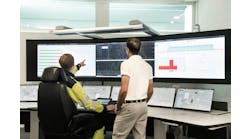- Published by exida and available for pre-order from www.exida.com, “Final Elements & the IEC 61508 and IEC 61511 Functional Safety Standards” by Chris O’Brien and Lindsey Bredemeyer reviews and explains how the IEC functional safety standards apply to final control elements. The overall safety life-cycle and reliability requirements are examined with a special focus on the challenges encountered when dealing with complex electro-mechanical subsystems, with requirements for designing and implementing reliable and effective safety-instrumented functions covered in a clear step by step manner. The application of failure analysis to the mechanical components used in final elements is discussed together with sources of failure rate data. Various valve, actuator and control technologies are reviewed in the light of their strengths and weaknesses in safety applications. Example analyses and calculations reinforce the concepts while appendices include samples of the documents required for certification to IEC 61508.
- RTP claims that its recently announced SIL 3-rated RTP 3000 critical control and safety system is competitive on price with non SIL-rated PLCs, allowing the same technology to be used for safety and non-safety applications. It can be applied as a simplex SIS for small SIL-2 applications, but can be expanded up to 16 I/O chassis in a full TMR architecture for the largest ESD and HIPS. Moreover, because it was originally designed as a DCS, it has the capability to be used as a Basic Process Control System, and its TÜV Certificate Report specifically approves combining control and safety in the same controller. RTP claims a reaction time of 12 ms, 1 ms Sequence of Events on all digital and analog inputs, an MTTFS of over 3000 years and operational availability of 99.9999% for the system.
- Leading OPC specialist Kepware has developed a range of new product offerings designed to deliver OPC-Classic through OPC-UA interoperability for license in the automation marketplace. The components are designed to be incorporated into third-party automation software solutions, enabling OEMs to leverage Kepware OPC Clients and OPC Servers as pluggable components, maintained and certified by Kepware, to meet the latest specifications for OPC-Classic and OPC-UA. Kepware CTO Tony Paine described the “Kepware OPC for Interoperability” products as a repackaging of the company’s existing technology, which removes from software vendors the need to be responsible for the development of OPC technology or for interoperability certification, both of which will be managed by Kepware. Products using the technology will, he anticipates, be “Connected with Kepware” in a program similar to “Intel Inside.” Kepware has also recently entered into partnership agreements with Specter Instruments to provide connectivity solutions for its remote alarming technology and with Yokogawa for its controllers and recorders.
- SERCOS International and the FDT Group have agreed to create an annex to the FDT specification for SERCOS III, which will become the first high-performance, real-time Ethernet communication standard to support FDT technology. This extension to the FDT specification will allow users to configure SERCOS III devices via DTMs, providing enhanced functionality for detailed device configuration and analysis via a graphical user interface. The FDT Group has grown its membership by 20% in the past year and now has a total of 69 member companies and organizations. FDT/DTM technology is currently in the final stages of the process to become an IEC standard, which should be achieved by May 2009. Meanwhile, the latest edition of the FDT Group newsletter at www.fdtgroup.org includes details of a pilot project at Dow Chemical’s Tarragona, Spain, facility where the technology was found to reduce instrument commissioning time by more than 40% and cut the time spent on last-minute changes during device integration by more than 80%.
- Austrian SCADA developer Copa-Data has introduced a special “wizard” to allow users of FactoryLink to migrate their existing solutions to the zenon SCADA platform. FactoryLink was originally developed by US Data and through a series of acquisitions eventually came into the ownership of Siemens. However, according to Copa-Data, it has now been official discontinued and development has ceased. Based on VBA, the wizard, which was developed in collaboration with Copa-Data customers who have already made the switch to zenon, reliably and rapidly imports variables, templates, mimics, bitmaps and static elements from existing projects, transfers texts, fonts and symbols and converts CB animations. It is provided at no extra cost over and above that of the standard zenon license, with the source disclosed to users who can, therefore, readily adjust it to their specific requirements.
- Yokogawa says it intends to become the global leader in LNG-related industrial automation covering liquefaction plants, LNG carriers, receiving terminals and floating production storage and offloading vessels (LNG-FPSOs). The company delivered the world’s first-ever LPG-FPSO control system in 2003. It claims a 22% market share with LNG liquefaction plant control systems and a 53% share with LNG receiving terminals, while recent orders from Australia and Brunei bring its LNG carrier count to 42. The recent Australian order is for the replacement of the integrated control system for an LNG carrier’s cargo and machinery operations with Centum VP and is scheduled for delivery in June 2009. The Brunei order covers monitoring and control systems for two dual-fuel diesel electric powered LNG carriers and includes Centum VP systems, engineering, manufacturing, installation and commissioning services. Delivery is scheduled for November 2009 and February 2010.
Latest from Industry News
Latest from Industry News



